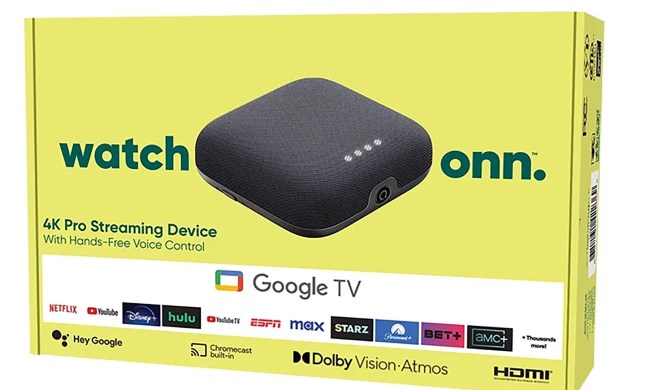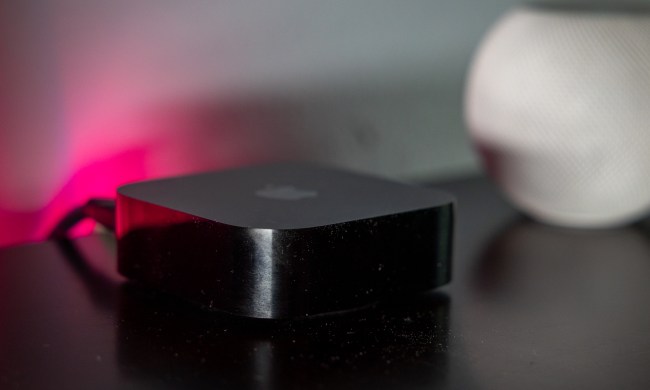
Finally! This is what we’ve been waiting for, right? Real progress for internet TV! Except the details of the announcements only serve to cement our growing fear: Internet TV sucks.
Instead of a revolutionary new medium, internet TV is becoming the new cable, repackaged and sold online. But why? As consumers flee cable in droves, how are they being met on the internet with more of what they hated in the first place? It’s complicated.
Moving backward
When DISH Network announced Sling TV in January of 2015, cable refugees went wild. With a collection of coveted channels like ESPN that had previously been unavailable without cable, Sling TV was hailed as a bold, revolutionary product that would transform TV forever. No more cable boxes. No more promotional bundles with expiration dates. Catching the big game would be as easy as catching up on Jessica Jones.
Everything on demand. That’s true evolution.
To an extent, it has — you really can watch ESPN on your phone, or TNT on your Roku, or the last few episodes of The Walking Dead on your tablet.
But Sling TV comes nowhere near delivering on the promise of internet TV. Think about it: How is it that cord cutters can catch up on every single episode of Game of Thrones with HBO Now, anytime, from virtually anywhere, but if you happen to miss the first half of the basketball game, you’re screwed? It just doesn’t feel like progress.
Sony’s Playstation Vue arrived after Sling TV and added a free cloud DVR to the mix, but it’s still an antiquated solution. Not only do you have to manually choose content to save, it’s also limited to just 28 days of storage. (Where they came up with that time limit we’ll never know.) Vue also tows the same glut of unwanted channels as cable (55 on the low end), the same parade of commercials, and a $30 starting price point (without local channels), maxing out at $45 for 100 channels. This feels more like regression than evolution.
As for new offerings in the pipeline, Hulu’s service is angling for $40 a month, with a limited number of channels from its co-owners, Fox, Disney, and Comcast’s NBCUniversal. Apple’s planned service (if it ever arrives) is expected to be similarly priced, while YouTube is reportedly aiming at $35 per month. But even if the pricing suits your budget, you can bet your last cable bill these options won’t be offering their full run of programming on-demand like Netflix or HBO do.
That might be enough to call internet TV a failure, but, sadly, we’re just getting started.
A hazy future
As televisions achieve higher and higher fidelity, internet TV is actually making your shows and movies look worse. PlayStation Vue has stuttered frame rates that make shows feel choppy. Sling TV often fares better in picture quality, but it falls prey to bandwidth limitations, with playback hiccups, and resolution that bounces up and down. On occasion, it buckles entirely under the weight of too many viewers during major events like playoff games — you know, the stuff you really want to watch.
Meanwhile, cable and satellite companies are prepping the next evolution in high-quality TV: 4K Ultra HD. While Comcast is still in the planning stages for live 4K, DirecTV has debuted three live 4K channels, including one completely dedicated to sports. Newcomers Netflix and Amazon have also embraced the new standards, brewing original series and movies from the filming stage to post-production in 4K with HDR. It seems ludicrous to pay for an internet TV package that actually regresses in quality.
You may be saying, “But hey, it’s live TV, it’s harder to deliver in high quality.” Tell that to Major League Baseball, which has been streaming high-quality live baseball games for years. In fact, the MLB is so good that HBO partnered with the league to build HBO Now, which serves up shows online at the same moment they air on traditional TV. Disney (which owns ESPN) even made a billion dollar bid for MLB’s service. Clearly, live TV over the internet is possible to execute well.
TV Everywhere, the impossible dream
Netflix CEO Reed Hastings knows internet TV isn’t the answer to cable’s technology problem. In fact, last fall he spelled out the easiest way for traditional TV players to best his own service and others like it: TV Everywhere. Coined by Time Warner CEO Jeff Bewkes, the term TV Everywhere refers to packing an entire cable or satellite package into one app that plays back content anywhere, anytime, live or on demand. Sounds great, right? The problem is, the very construct of traditional TV all but forbids this seemingly logical solution.
“The challenge in the industry is that it’s very fragmented between the cable networks and the distributors, and so it’s really tough to work well together, to extend the ecosystem,” Hastings explained in November.
That’s an understatement. Between content creators, traditional networks, cable companies, and monoliths like Comcast that are all of the above, there are just too many cooks. All of those companies have shareholders to satisfy, lawyers to oblige, and channels to promote, some of which are only for sale as a packaged deal. Most of all, they’ve got ads to sell. And that makes it nearly impossible, at any price, to make internet TV like Netflix. That may be why a recent poll revealed 76 percent of Netflix subscribers believe it will replace cable altogether.
A la carte for the win
A la carte TV — the ability to pick and choose from many services and channels in order to build the perfect TV package — would seem to be the ultimate solution. Purchasing individual channels like ESPN or AMC sounds great, but imagine being able to rent live NFL games or TV shows, on your schedule, for a nominal fee — like renting a movie online. CBS says its one-off Super Bowl 50 stream brought in a “record audience.” Certainly there is a monetization opportunity which would make this kind of service lucrative.
Why can you watch every episode of Game of Thrones on your time, but you can’t catch the first half of the game?
But even if we get it, this solution isn’t a reprieve from the costs of cable. Add the big three on-demand streamers — Netflix, Amazon, and Hulu — dash in HBO Now and decent internet service package, and you’re already paying the same as many cable/internet bundles right now.
The true draw of a la carte represents the crux of the cord-cutter philosophy: convenience, choice, and most of all, freedom. Freedom to pick and choose what you want to watch, when you want to watch it. Everything on demand. That’s true evolution.
Oh no you don’t
The biggest threat to the dream of a la carte TV may come from the old guard.
In February, the Wall Street Journal reported that Time Warner was interested in purchasing a 25 percent share in Hulu, with the goal of removing one of its biggest assets: next day airing of current network programming. Time Warner reps said airing current TV shows on Hulu (or anywhere else) without requiring a cable subscription is “harmful to its owners.” Meanwhile, those same network owners have been reluctant to re-sign programming agreements with Hulu, leading to fears that this new service could spell the end of Hulu as we now know it.
That’s the real fear about internet TV: It’s simply a new way for cable companies and content creators to hijack the streaming revolution. If this continues, you can bet many cord cutters will continue to say bye-bye to traditional TV, online or otherwise. That’s especially true if live sports make their way online via a la carte channels like ESPN, supplemented with HD antennas for local programming. And let’s not forget that when networks refuse to offer their highly sought-after content at a fair and reasonable price, consumers turn to other means: they steal it.
With so many new options still on the horizon, we’ll have to wait to see just how the internet TV paradigm develops. But, if there’s one thing we’ve learned from the streaming TV revolution, it’s that those who try to fight the tide never push back the waves. They drown.




